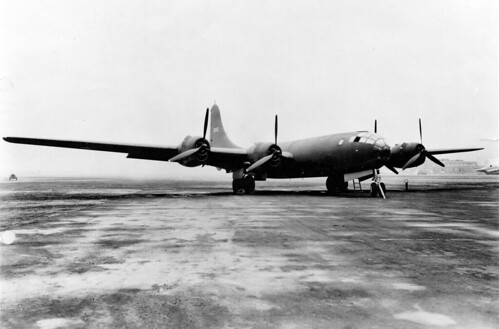The Boeing B-29 Superfortress makes its maiden flight.
The Boeing B-29 Superfortress was a four-engine, long-range, heavy bomber aircraft that played a pivotal role in World War II and the Korean War. It was one of the most advanced and sophisticated bombers of its time, known for its high-altitude capabilities and significant payload capacity.
Development and Design:
The development of the B-29 Superfortress began in the late 1930s, and it was designed to be an improvement over its predecessor, the B-17 Flying Fortress.
It was designed by a team led by Boeing engineer Robert R. Gross and featured several advanced technologies, including pressurized crew compartments, remote-controlled gun turrets, and a centralized fire-control system.
Specifications:
Crew: Typically consisted of 11 to 12 crew members, including the pilot, co-pilot, bombardier, navigator, flight engineer, radio operator, and gunners.
Wingspan: Approximately 141 feet.
Length: About 99 feet.
Maximum Speed: It could reach speeds of up to 365 mph (587 km/h).
Range: The B-29 had a maximum range of around 3,250 miles (5,230 km).
Maximum Bomb Load: It could carry a maximum bomb load of up to 20,000 pounds (9,072 kilograms).
Ceiling: It could operate at altitudes of up to 31,850 feet (9,710 meters).
Features:
The B-29’s most notable feature was its pressurized cabin, which allowed the crew to operate at high altitudes where the air was thin, making it difficult for enemy aircraft and anti-aircraft guns to reach them.
It was equipped with remote-controlled gun turrets, making it more efficient and safer for gunners to defend the aircraft.
The Superfortress had a “Central Fire Control” system that coordinated the firing of its machine guns and cannons, improving its defensive capabilities.
Operational History:
The B-29 Superfortress was primarily used by the United States Army Air Forces (USAAF) during World War II.
It played a significant role in the Pacific theater, conducting long-range bombing missions against Japanese targets, including cities and industrial complexes.
The most famous B-29 missions were the atomic bombings of Hiroshima and Nagasaki in August 1945, which played a key role in Japan’s surrender and the end of World War II.
B-29s were also used during the Korean War, where they conducted strategic bombing missions.
Legacy:
The B-29 Superfortress is considered one of the most iconic aircraft of World War II and played a critical role in shaping the course of the war.
After the war, some B-29s were converted for other roles, such as reconnaissance and weather research.
The aircraft’s design and technology influenced the development of subsequent generations of bombers.


